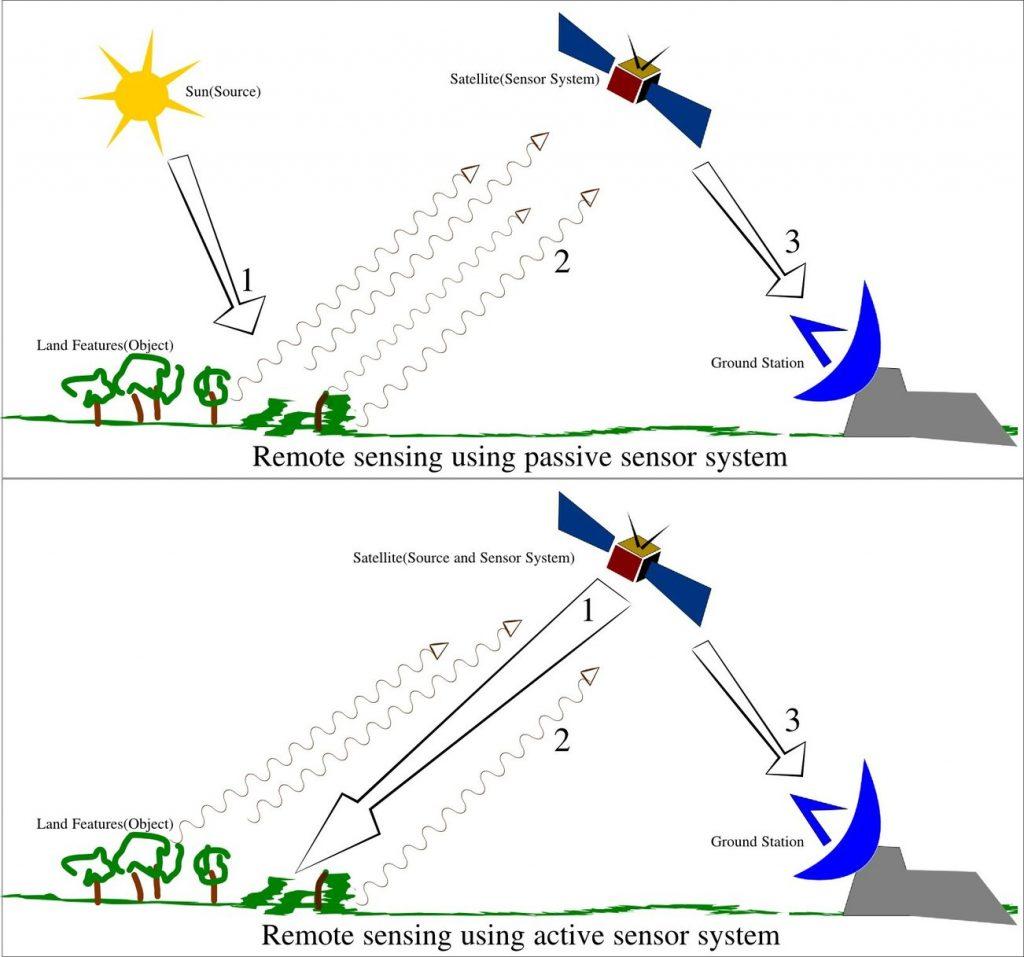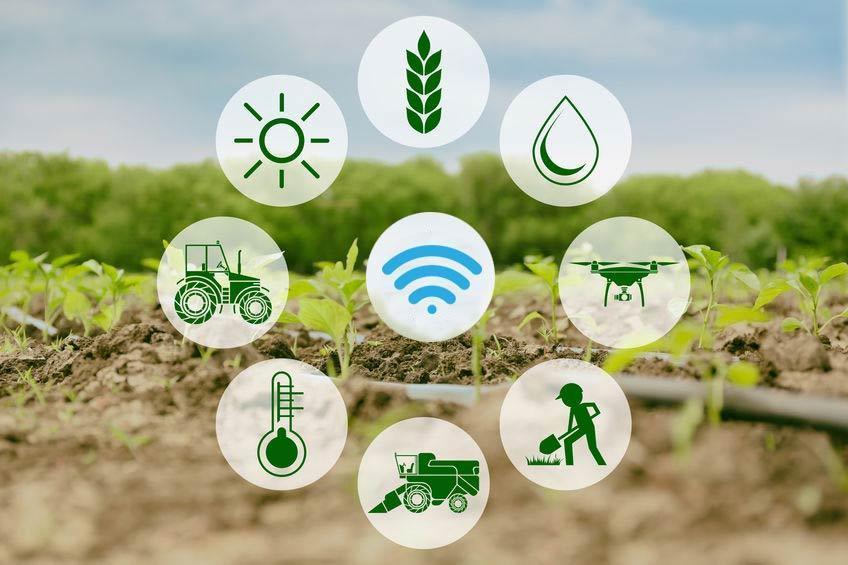The Internet of Things (IoT) and Artificial Intelligence (AI) are playing larger roles in smart farming systems. Smart agriculture uses remote sensing technology to track and predict crop productivity, environmental conditions, and allow for smart machinery control. These improvements can significantly increase the efficiency and productivity of the agricultural sector.
Unfortunately, 8.9 per cent of the world population currently lives in hunger. Furthermore, the COVID-19 pandemic has heavily impacted nations that rely on agrarian economies. The world’s agricultural productivity must increase dramatically to feed an estimated 9.8 billion people by 2050. Agriculture plays a vital role in food security and reducing poverty, having accounted for 4 per cent of Gross Domestic Product (GDP) globally and more than 25% of GDP in developing countries as of 2018.
The agriculture sector also affects climate change. It takes 70% of the world’s freshwater usage and emits large amounts of greenhouse gases. It also increases food waste. In turn, climate change reduces crop yields, which decreases food security levels. Clearly, we need more sustainable agricultural systems to reduce climate change impacts and improve global food security.
What is remote sensing?
Remote sensing is a way of gathering information without physical contact. Information is instead gathered by monitoring, analysing, or recording the radiation that comes from an object.
Remote sensing can be done in one of two ways, based on the source of signal used:
- Active remote sensing – The instrument makes its own emissions to gather information on a target.
- Passive remote sensing – The instrument collects emissions reflected from a source to gather information.
This is similar to the strategy used by satellites for world mapping. It can also be used in fields such as forestry, weather, biodiversity, and geography.

Applications in Agriculture

The agriculture sector uses remote sensing in a wide range of applications such as:
- Estimating crop yield and quality – Gathering information on expected yields under given conditions helps increase efficiency and lower the economic risk to growers and producers.
- Monitoring crop health – With the health of crops impacting yields, monitoring crop health will therefore reduce potential yield losses.
- Weed, pest and disease control – Weeds and pests can cause much damage to crops, leading to reduced yields and low-quality products. It is vital to find any weeds and pests before they infest crops, which remote sensing can achieve.
- Crop planting – Remote sensing plays a major role in planning where to plant crops. This can help predict soil conditions and weather patterns to help farmers plant crops at the best times.
- Estimating soil conditions – Soil moisture, mineral status, and soil type can each affect crop health and yields. Monitoring the soil will therefore allow farmers to manage fertilisation and irrigation levels.
- Irrigation management – This helps maintain soil moisture. Maintaining this involves the intake of soil minerals into plants. Observing soil moisture levels provides information on irrigation levels.
- Monitoring weather patterns – Rainfall, day length and environmental temperatures all play an important role in crops’ vegetative and reproductive growth. This allows farmers to schedule harvesting, crop planting, and fertiliser application times.
- Monitoring post harvest quality – The quality of any produce should be maintained until it reaches the consumer. Many post-harvest disorders occur due to unsuitable storage and transportation. Therefore, sensors measure relative humidity, temperature, oxygen, and carbon dioxide levels during storage and transport.
Increasing sustainable food production through remote sensing
Such a wide array of applications demonstrates the role of remote sensing in the agriculture sector. The Grain Industry Association of Western Australia currently uses remote sensing to predict yields under changing weather conditions. Similarly, India is one of the top agricultural producing countries in the world, and has recently started to venture into digital farming.
Mapping plant systems can help farmers schedule planting times. Such systems can also be used when deciding which crops to grow. These changes will increase efficiency and decrease time, labour, and costs of mapping large areas of land. Predicting weather, soil conditions, and irrigation requirements allows for sustainable water and soil use, thereby reducing the exploitation of land and water.
In contrast, the overuse of fertilisers and pesticides can cause soil and groundwater contamination, as well as harming beneficial soil microorganisms and non-target vegetation. The misuse of fertilisers, insecticides, and pesticides also poses health risks to humans. Monitoring plant growth and health will help farmers identify crop needs and manage fertilisation programs. The early detection of pests and diseases allows farmers to manage them without risking crop yields or the environment.
Crop health and nutrition are also vital in reaching high crop yields and ensuring their quality. Data collected through remote sensing on crop nutrition levels will help maximise harvests in current and upcoming seasons.
Challenges
These remote sensing technologies are becoming more popular in the agriculture industry as they have become more accessible and affordable in the past few years. However, there are still challenges and possibilities for further development, including:
- Technical knowledge – Possessing technical and software knowledge on image processing tools is important when working with sensors and imaging systems. Proper training of people with the relevant skills and expertise will help overcome these challenges.
- Reproducibility and applicability of existing data – Data obtained through this technology depends on climatic, crop. and field conditions, as well as overall analysis techniques. As a result, it is important to develop simple, reliable tools and real-time applications.
- Storage and use of big data – The creation of large amounts of data and storage has recently become a challenge. This could make real-time data processing more time consuming and difficult. Therefore, optimising data management systems in the cloud, and enhancing the protection of sensitive data and user privacy is important.
Is it the real deal?
Further research and development to improve sensors is underway, and check if they give out clear and accurate information. Timely available data allows for real-time diagnostic and prognostic tools. The THRIVE Platform, created by THRIVE Project, is an example of such a tool. It allows access to satellite technology, the Internet of Things (IoT), and predictive analytics. It also uses machine learning to provide the missing link between what is happening on the ground and what our path forward should be. Through cloud computing and big data, the THRIVE Platform is able to guide our best course of action.
Sensing technologies are widely used within the agricultural sector due to their wide range of applications, efficiency, and overall sustainability. Precision agriculture has become more efficient with the use of remote sensing. Global poverty, hunger, and climate change can each be mitigated using this type of sustainable technology. Remote sensing technology ultimately allows people and the environment to thrive together through sustainable agricultural systems.
If making our world a better place for all living organisms interests you, check out how the THRIVE platform can help make a THRIVABLE future.
Otherwise, visit the THRIVE website for more information.























